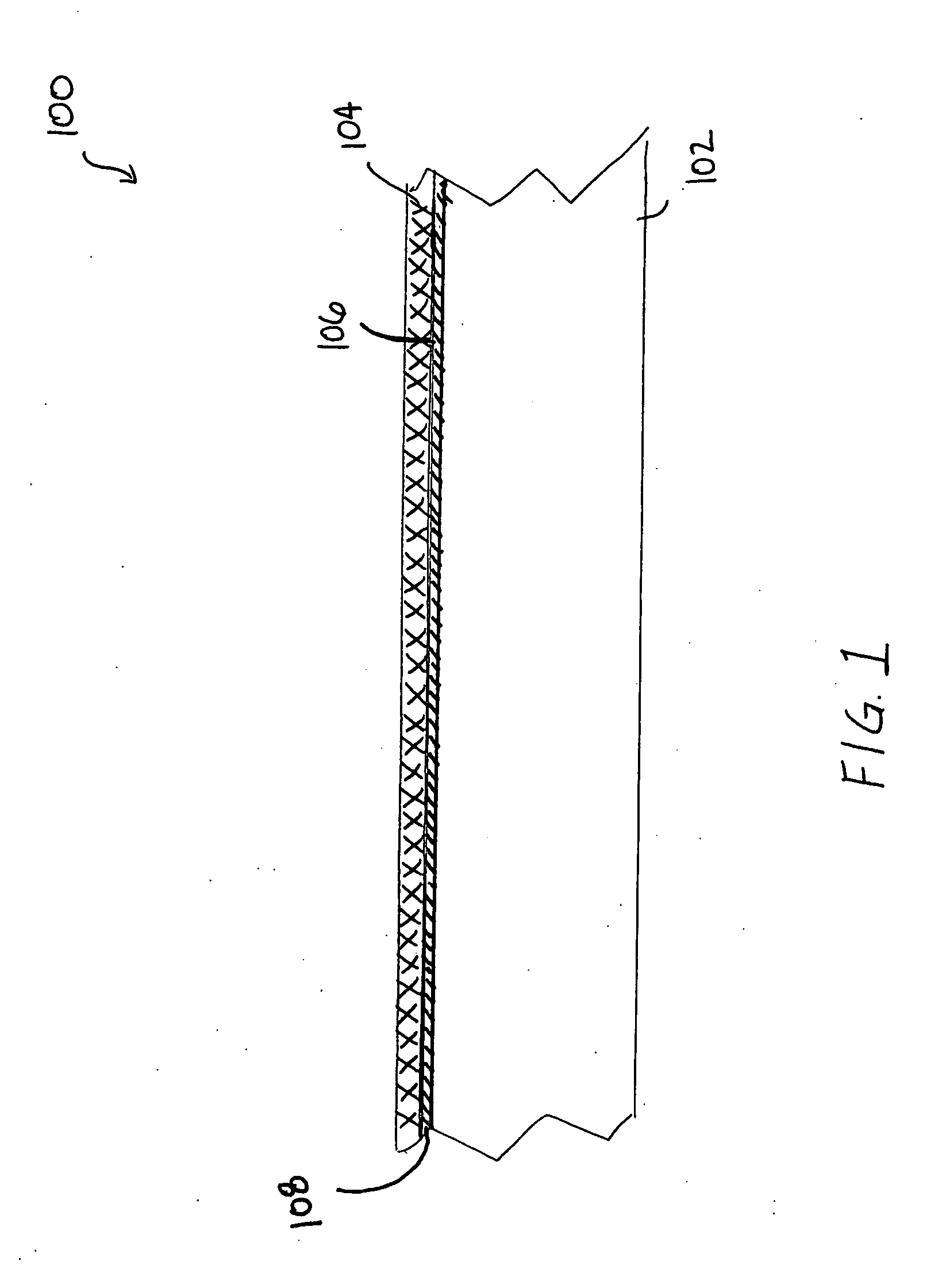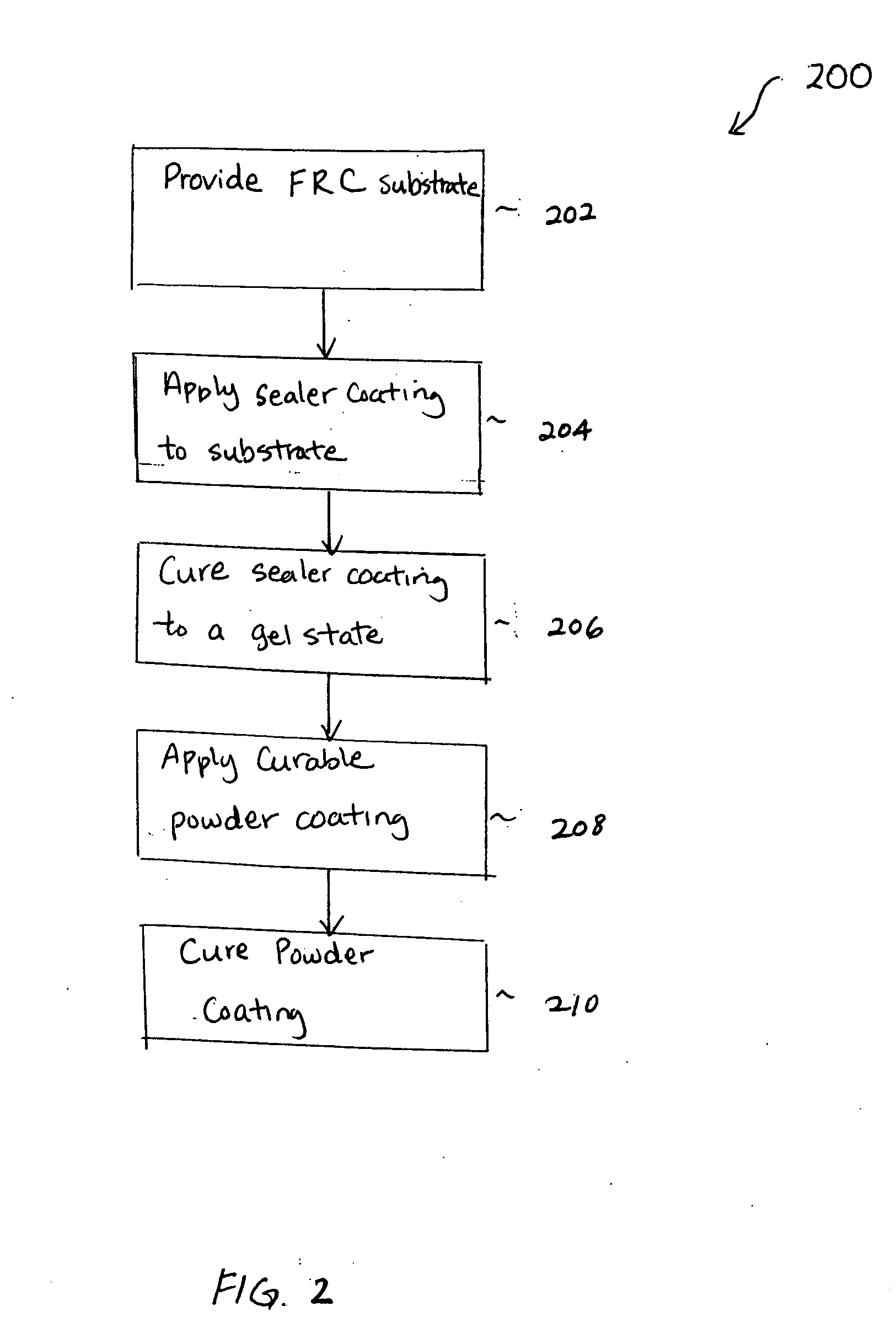Composite cement article incorporating a powder coating and methods of making same
a technology of composite materials and powder coatings, applied in the field of composite materials, can solve the problems of physical and chemical changes in frc products, end product remains susceptible to both physical and chemical modes of degradation, and the building materials are subject to physical damage, so as to facilitate the application of the powder coating layer
- Summary
- Abstract
- Description
- Claims
- Application Information
AI Technical Summary
Benefits of technology
Problems solved by technology
Method used
Image
Examples
Embodiment Construction
[0020] The preferred embodiments of the present invention provide a fiber cement composite article having a protective powder coating on at least one surface. The preferred embodiments also provide methods of applying powder coating to a fiber cement substrate and adapting the fiber cement composite material to better accommodate and utilize the advantages of powder coating technology to reliably and economically produce fiber-reinforced cement composites with durable and functional coatings.
[0021] In a preferred embodiment, the curable powder coating chemistry, final film thickness and film properties are selected to enhance certain desirable characteristics of the fiber cement composite article such as durability, aesthetics, abrasion resistance, water repellency, impact resistance or others, either alone or in combination. The powder coating and its method of application are selected to be compatible with the known methods of manufacturing fiber cement and preferably reduce the ...
PUM
| Property | Measurement | Unit |
|---|---|---|
| pressure | aaaaa | aaaaa |
| pressure | aaaaa | aaaaa |
| decomposition temperature | aaaaa | aaaaa |
Abstract
Description
Claims
Application Information
 Login to View More
Login to View More - R&D
- Intellectual Property
- Life Sciences
- Materials
- Tech Scout
- Unparalleled Data Quality
- Higher Quality Content
- 60% Fewer Hallucinations
Browse by: Latest US Patents, China's latest patents, Technical Efficacy Thesaurus, Application Domain, Technology Topic, Popular Technical Reports.
© 2025 PatSnap. All rights reserved.Legal|Privacy policy|Modern Slavery Act Transparency Statement|Sitemap|About US| Contact US: help@patsnap.com



